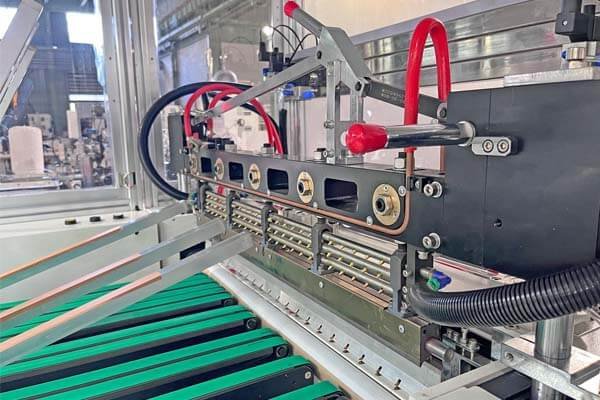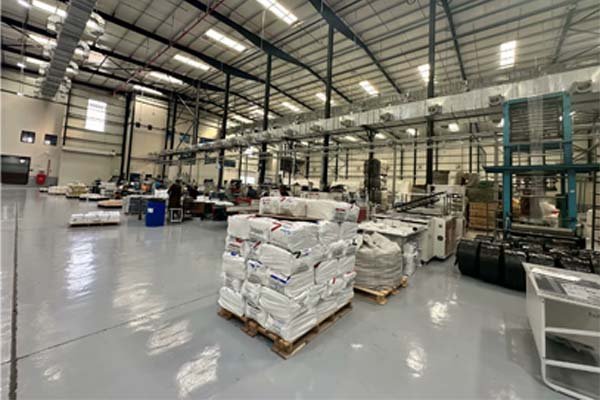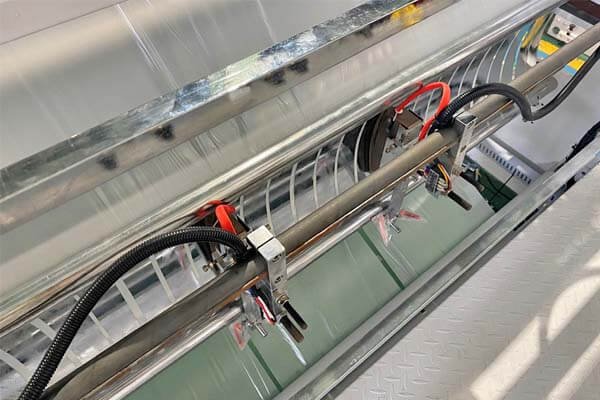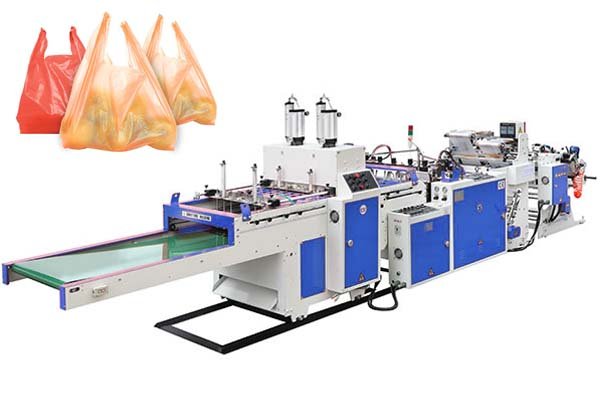
I notice buyers freeze when they face ten brands, twenty specs, and zero clear answers. The fear of a wrong pick is real; let me erase it fast.
The best bubble machine blends precise web tension, multi-layer extrusion1, and live service. BagMec® BM-ABF800 leads because it runs 60 m/min, holds ±1 mm, and ships with 24 h remote support2.
Too many vendors shout single “wow” figures yet hide waste, noise, or downtime. I stack five factors—speed, yield, energy, tolerance, service—then follow data. The same pattern repeats: servo pull-rolls plus closed-loop tension win. BagMec’s BM-ABF800 is one of three in its tier with a stable 98 % uptime log across forty-plus nations, so it tops my list.
A deeper scan shows why.
- Servo motors lock tension; bubbles stay round.
- A/B/A co-extrusion3 saves 12 % resin by hiding recycled core.
- A 10-inch Siemens HMI stores 99 recipes, slicing changeover to four minutes.
I also trace support. BagMec closes 90 % of tickets online inside one day. That keeps real-world output high and stress low.
What is the cost of air bubble pouch making machine?
Buyers often toss wild guesses from chat groups. I will drop the real range in one clear line.
A fresh air-bubble pouch machine lands between US $8,000 and US $12,000 FOB China; price climbs with web width, auto-stacking, and perforation, while a 600 mm manual-stack unit sits near US $8 K.

Why do two “same speed” machines differ by four grand?
I break cost into three buckets.
1. Mechanical Breadth
| Module | Added cost (USD) | Benefit |
|---|---|---|
| Perforation wheel | +1,200 | Tear-off rolls |
| Servo flying knife | +1,600 | Clean cuts at 50 m/min |
| Auto stacker | +1,100 | One less operator |
2. Control Depth
Entry PLCs store 20 jobs and use resistive screens. A Siemens HMI4 adds about US $700 but halves setup time. That saves labor every shift.
3. Energy Logic
Old AC motors run full blast. IE3-rated servos cost +US $500 yet slash power by 25 %. Payback slips under one year for a two-shift plant.
Add freight and customs5. CIF Los Angeles usually adds 9 %. A licensed electrician may bill US $2,000 for hook-up. Budget truthfully to avoid shocks.
How do I choose the right width for my bubble film orders?
I meet shippers who buy 1,600 mm monsters but only pack phone cases. Let me map width in one rule.
Choose film width at 1.2 × your widest flat SKU; double if you fold and seal both sides. Most e-commerce sellers fall between 400 mm and 800 mm.
Width Decision Framework
Step 1 – List SKUs
Write each product’s flat size.
Step 2 – Add Seal Margin
Add 20 mm each side.
Step 3 – Check Local Roll Supply
Many resin shops cap at 1,000 mm. Wider film may force imports.
| SKU | Flat size (mm) | Needed film width (mm) |
|---|---|---|
| Phone case | 180 × 90 | 250 |
| A4 book | 297 × 210 | 350 |
| Hoodie | 400 × 320 | 500 |
A 600 mm machine covers all three. That is why I ship more 600 mm models than any other size.
Does multi-layer extrusion lower my resin bill?
Short answer: yes, if you burn at least 500 kg a week.
Three-layer lines hide recycled or calcium-filled PE in the middle, keep virgin skin outside, and shave 8 – 15 % off raw cost without hurting clarity.
Cost Math
| Resin | Price/kg (USD) | Layer share | Cost share |
|---|---|---|---|
| Virgin LDPE | 1.45 | 35 % | 0.507 |
| Recycled LDPE | 0.85 | 50 % | 0.425 |
| Slip MB | 2.10 | 15 % | 0.315 |
| Blended total | — | 100 % | 1.247 |
Mono-layer would stay at US $1.45/kg. At 500 kg/week the saving is about US $5,270 a year—more than the interest on a layer-upgrade loan.
Can I run biodegradable film on a standard bubble line?
Many buyers fear they must scrap old PE gear. Often they do not.
If the extruder screw L/D tops 28:1, zones hold ±2 °C, and venting exists, I can run PLA film at 70 % speed; only the chill roll and nip need stainless contact.

Retrofit Checklist
Hardware to swap
- Stainless 304 chill roll (≈ US $1,200).
- Moisture dryer (≈ US $900).
- Optional bio-grade die (≈ US $2,500).
Process tweaks
- Dry PLA at 45 °C, 4 h.
- Cut screw rpm 15 %.
- Use zero-tint masterbatch; PLA yellows fast.
Five retrofits I guided all hit 96 % bubble integrity. Two later scaled to full PLA lines.
How long before a bubble pouch machine pays back?
Managers ask this one metric.
Payback sits near 10 – 18 months when a plant makes 150,000 pouches per day, saves US $0.004 each versus buying outside, and spends US $10,000 on the machine plus US $2,000 install.

Simple Payback Model
Annual saved cost = (Outsource price − In-house cost) × volume
= (0.022 − 0.010) × 45 M pouches
= US $540,000
Extra overhead (power, labor, maintenance) ≈ US $80,000
Net gain ≈ US $460,000
If machine and install cost US $12,000, payback ≈ 9.5 months. Even half that volume stays under 18 months, well inside a CFO’s three-year ceiling.
Which after-sales package makes the machine “future proof”?
Many buyers stop at specs and skip support. That bites later.
Choose vendors who offer remote VPN diagnostics, next-day courier parts, and bilingual manuals; these three services cut average downtime from 26 h to under 8 h.
Service Matrix
| Service | Low-tier vendors | BagMec® |
|---|---|---|
| VPN login | — | Yes, 24/7 |
| Parts lead-time | 10-14 days | 48 h |
| Manual language | Chinese only | CN/EN/ES |
| On-site training | Extra fee | Free for first install |
A one-day shutdown on a two-shift line costs more than US $1,200 in lost output. Good service is cheap insurance.
How do I finance a pouch line without choking cash flow?
Some firms fear any cap-ex. I ease them in.
Blend 30 % down-payment, 24-month supplier credit, and local tax rebates; typical monthly outflow under US $500 covers a US $10 K rig, well below the US $45 K monthly saved by in-house output.
Funding Options
Option A: EXIM bank loan
• Rate 3.8 % fixed
• Tenor 36 months
• Collateral: machine lien only
Option B: Vendor L/C
• 30 % down, 70 % sight
• 30 % down, 70 % sight L/C
• No local bank fee if you use vendor’s partner bank
• Approval within one week
Option C: Government equipment credit
Many regions give a 10 % subsidy for “green” or “automation” tools. The BagMec BM-ABF800 already uses IE3 motors, so it normally qualifies. I prepare the energy-audit sheet so clients win the rebate without paper pain.
| Plan | Down | Term | Monthly pay | Net cash gain* |
|---|---|---|---|---|
| A | 20 % | 36 mo | $237 | $3,500 |
| B | 30 % | 24 mo | $292 | $3,450 |
| C + subsidy | 20 % | 36 mo | $193 | $3,544 |
*Net cash gain = saved outsourcing cost − finance payment (assumes 150 k pouches/day).
Are Chinese bubble machines reliable for EU safety rules?
Yes, if the factory follows CE and low-voltage code.
BagMec designs every panel to EN 60204-1, adds dual-channel e-stops, and delivers a signed CE DoC; TÜV audits show leakage current under 2 mA, safe for EU import.
Compliance Path
Wiring
• Color code to IEC 60204 (blue neutral, green-yellow PE).
• 480 V machines ship with step-down transformer, no surprise onsite.
Guarding
• Interlocked plex doors stop the line within 50 ms.
• Laser-verified gaps stay under 6 mm, so fingers stay out.
Documentation
• Full risk assessment file in English.
• Circuit and pneumatics prints inside the crate.
EU customs clears in 48 h because papers are right.
How do I keep bubble quality steady during summer humidity?
High humidity collapses bubble height. I use three simple tweaks.
Chill water to 14 °C, lower die temp by 6 °C, and lift air-ring pressure 10 %; with these steps bubble height drop stays below 3 % even at 85 % RH.
Climate Control Table
| Variable | Dry season | Wet season | Effect |
|---|---|---|---|
| Die temp | 195 °C | 189 °C | Slows resin cooling lag |
| Water temp | 18 °C | 14 °C | Sharpens film set |
| Air ring | 0.30 MPa | 0.33 MPa | Keeps bubble shape |
How can I raise OEE on a pouch line without new hardware?
Most managers chase more machines when they should squeeze the one they have.
Track three numbers—planned downtime, small stops, scrap—and attack the worst first; the average BagMec client lifts OEE6 from 62 % to 80 % in eight weeks.
Quick-Win OEE Audit
Planned downtime
Cut tool change time with QR-coded recipe loads. Gains ≈ +4 %.
Small stops
Teach operators to grease bearings daily, not weekly. Stops fade.
Scrap
Use laser edge guides. Mis-seal trim drops 30 %.
| KPI | Before | After | Delta |
|---|---|---|---|
| Availability | 85 % | 92 % | +7 % |
| Performance | 78 % | 85 % | +7 % |
| Quality | 94 % | 98 % | +4 % |
| OEE | 62 % | 80 % | +18 % |
I send a one-page checklist. No cap-ex, only habits.
Conclusion
Pick width, layer count, and service first; a $8–12 K bubble pouch line then pays back in under two years while meeting EU rules and future bio-film shifts.
-
Learn how multi-layer extrusion can significantly reduce your resin costs while maintaining quality. ↩
-
Find out how remote support can enhance operational efficiency and reduce downtime. ↩
-
Explore the benefits of A/B/A co-extrusion in reducing material costs and improving product quality. ↩
-
Discover the advantages of Siemens HMI, including efficiency and ease of use in production. ↩
-
Explore the implications of freight and customs on overall manufacturing costs and budgeting. ↩
-
Discover strategies to enhance Overall Equipment Effectiveness (OEE) and boost productivity. ↩






